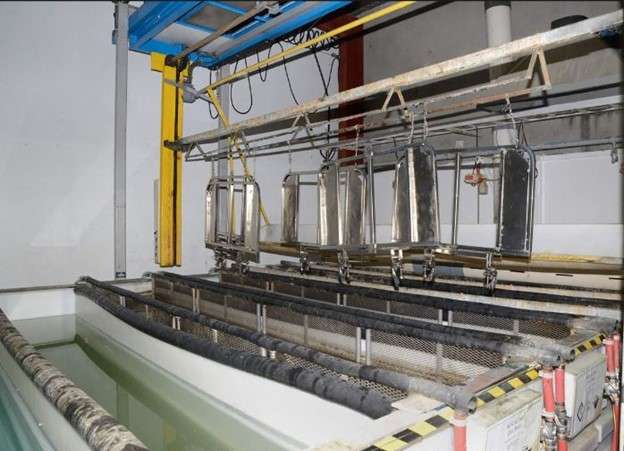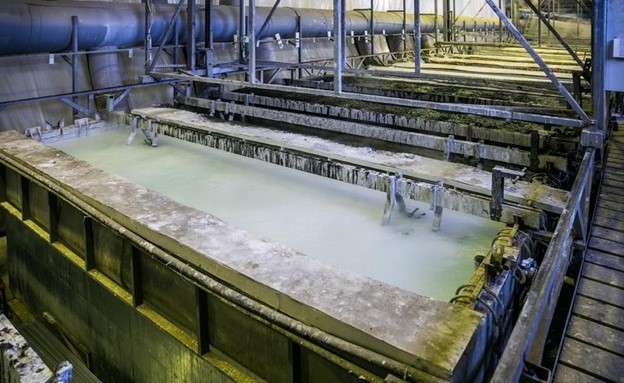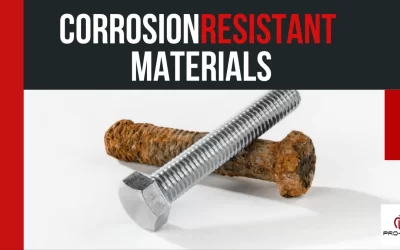
Zinc plated parts
Ever thought about how zinc electroplating stacks up against galvanization while protecting metal components from corrosion?
Choosing the right zinc coating layer is essential for increasing product durability, minimizing long-term maintenance costs, and improving aesthetics. Whether you’re dealing with precision components or structural parts, understanding the core differences between these two techniques can help you make the right decision for your project.
At ProleanTech, we specialize in achieving high-performance surface treatments according to your industry needs. With advanced capabilities, we offer reliable zinc coating solutions with consistent finishes, tight tolerances, and fast turnaround for both electroplating and galvanization.
This blog will help you to break down the working principles, benefits, and uses of zinc electroplating and galvanization. You’ll also get to know how ProleanTech can help you select the right method according to your product performance requirements.
Let’s dive straight into the article:
What is Zinc Plating or Electroplating?
Zinc electroplating uses electrical current to deposit a thin zinc layer on a conductive metal surface, enhancing corrosion resistance and surface appearance.
Zinc electroplating is a popular surface finishing approach, which involves the electrochemical deposition of the zinc layer on the metal surface.
It provides an inexpensive yet highly effective method of protecting metal objects from corrosion, making it an essential process for many industries.
Working principle of Electroplating
Electroplating uses an electric current in an electrolyte solution to deposit zinc onto a negatively charged substrate, forming a protective zinc layer.
The basic working principle of zinc electroplating involves the application of an electric current to the electrolyte solution.
When an electric current passes through the electrolytic solution, it causes the zinc ions to dissolve and migrate toward the negatively charged metal substrate (part to be plated).
As the zinc ions come into contact with the metal substrate, they are reduced and deposited onto the surface of the substrate in the form of a thin layer of zinc.
Let’s understand the working principle of zinc electroplating with the example of plating on steel parts.
At the anode (positive electrode):
Zn → Zn2+ + 2e-
At the cathode (negative electrode):
2H+ + 2e- → H2
Overall reaction:
Zn + 2H+ → Zn2+ + H2
In this process, zinc metal is oxidized at the anode, producing zinc ions in the solution. These zinc ions migrate towards the steel surface, where they are reduced at the cathode, forming a thin layer of zinc metal on the surface of the steel.
Which materials are compatible with a zinc electroplating finish?
Zinc electroplating can be used to finish the surface of several metallic substrates, including steel, iron, brass, copper, and aluminium.
Nevertheless, not all materials are compatible since the parts need to be electrically conductive for any electroplating finish.
In addition, highly reactive materials with zinc are incompatible with zinc electroplatings, such as certain types of magnesium and titanium alloys.
Steps Involved in the Zinc Electroplating Process
Electroplating includes surface cleaning, immersion in a zinc solution with electric current, and post-treatment for corrosion resistance.
The zinc plating process could be more complex than it sounds, especially if you are non-professional. It involves several steps, from surface preparation to post-processing of finished parts.

Zinc electroplating process
- Surface Preparation
Firstly, the substrate to be plated is cleaned and polished to remove any dirt, oil, or oxide layers on its surface. Then, substrates are immersed in a degreasing solution to remove any remaining oil or grease from its surface, followed by acid pickling and activation.
- Electroplating
Only after surface preparation parts are immersed in a zinc ions plating solution a direct current is passed through the solution, which causes the zinc ions to be deposited onto the object’s surface.
- Post-processing
After plating, the parts are washed and dried to remove any excess plating solution. The zinc coating is then passivized to improve its corrosion resistance.
The Galvanization Finish
Galvanization is a mechanical plating finish that involves coating a metal with a layer of zinc to protect it from corrosion. Zinc is a highly reactive metal that forms a protective barrier when it comes into contact with moisture, oxygen, or other corrosive substances. Galvanization can be performed on many metal substrates, including steel, iron, and aluminum.
Working principle
The working principle of galvanization is based on the electrochemical reaction between the zinc and the metal substrate being coated. Zinc is a more reactive metal than steel, iron, or aluminum, which are commonly used as substrates for galvanization.
For example, the following electrochemical reaction occurs at the interface between the steel and the molten zinc during the galvanization of steel substrates.
Fe + Zn2+ → Fe2+ + Zn
The iron atoms on the steel surface substrate react with the zinc ions in the molten zinc bath to form ferrous ions and zinc atoms. The zinc atoms then diffuse into the surface and react with the iron atoms to form a layer of intermetallic compounds, creating a solid bond between the zinc coating and the steel substrate.
Steps involved in the galvanization process

Galvanization process
The process includes surface cleaning, immersion in molten zinc at high temperatures, cooling, and post-treatment for durability.
Galvanization is done by immersing the substrate in a bath of molten zinc, which causes a coating on the substrate’s surface. The temperature of molten zinc ranges from 400 to 450 degrees Celsius.
There are several steps to accomplish the galvanization plating on the part’s surface.
- Surface Preparation
Firstly, the metal surface is cleaned to remove any dirt, corrosion, or other pollutants that could interfere with the bonding of the zinc coating. It is usually done with a wire brush or a degreasing solution. In addition, “pickling and fluxing” are carried out after cleaning to remove any remaining oxide or rust particles.
- Galvanization
Once the surface preparation is finished, now parts are ready for galvanizing. It is dipped into a bath of molten zinc, which is typically held at a temperature of around 450 degrees Celsius. The zinc bonds to the surface of the metal and forms a protective coating. The duration of immersion in the molten zinc bath determines the thickness of the layer.
- Cooling and Finishing
After galvanizing, the metal is inspected to ensure the coating is even and consistent. The metal is then cooled and may be subjected to post-treatment processes such as quenching or passivation to improve the durability and performance of the coating.
Advantages of Zinc Plating Finish
Zinc coatings offer corrosion resistance, cost-effectiveness, versatility, and aesthetic appeal, with benefits differing by method.
Zinc coating is a highly corrosion and abrasion-resistant finish that protects the underlying substrate for an extended period. It can be carried out in many ways, including electroplating and galvanization, and each method has unique benefits.
Firstly, let’s explore the typical advantages of zinc plating offered by both zinc electroplating & galvanization.
- Excellent corrosion resistance
One of the most significant advantages of zinc plating is its excellent corrosion resistance. The highly reactive nature of zinc metal allows the coating to readily react with atmospheric oxygen and water to form a barrier of zinc oxide layer on the surface. This barrier of oxide layer prevents the moisture and oxygen from reaching the underlying metal from corrosion.
- Cost-effectiveness
Zinc is a widely available and reasonably inexpensive metal, making it an economical choice for surface treatment applications. So, it is a cost-effective method of protecting metal substrates from corrosion compared to other approaches, such as nickel or chromium plating.
Furthermore, zinc plating requires less maintenance than other protective coatings, which can assist in lowering long-term expenditures.
- Versatility
It is a versatile surface finish that can be applied to various metal substrates, including steel, iron, copper, and brass. Zinc plating can also create diverse surface finishes, including bright, matte, and black.
- Aesthetic Appeal
Zinc plating enhances the appearance of manufactured parts, making them more appealing to customers. Depending on the application, it can create a range of surface finishes, from a bright, shiny finish to a matte or black finish.
Distinctive Benefits of electroplating
- Electroplating allows for precise control over the thickness of the zinc coating. It is essential for applications where a specific level of protection is required.
- It maintains a highly uniform coating, which ensures that the entire surface of the substrate is protected from corrosion.
- Electroplating can develop zinc coatings of varying thicknesses, from thin decorative to thick industrial coatings.
Distinctive Benefits of galvanization
- It produces thicker zinc coatings than electroplating, making it an excellent alternative for applications requiring high corrosion protection.
- Galvanized coatings outlast other types of zinc coatings. It offers excellent resistance to abrasion, impact, and other mechanical wear.
- Galvanized coatings repair themselves. If the coating is scratched or damaged, the zinc reacts with moisture, generating a new zinc oxide layer.
Selection of Zinc Coatings
When choosing the right zinc coating for your application, several factors must be considered. The table below provides guidance on selecting the appropriate zinc coating method based on environmental conditions and performance needs:
|
Coating Type |
Typical Thickness |
Corrosion Resistance |
Best For |
Service Life Expectancy |
|
Zinc Electroplating |
5-25 microns |
Moderate |
Indoor or mild outdoor environments |
5-10 years |
|
Hot-Dip Galvanizing |
45-200 microns |
Excellent |
Severe outdoor exposure, coastal areas |
20-50+ years |
|
Mechanical Plating |
10-40 microns |
Good |
Threaded parts, springs, fasteners |
10-20 years |
|
Zinc Thermal Spray |
50-250 microns |
Very Good |
Large parts, field repairs |
15-30 years |
|
Zinc-Rich Paints |
20-90 microns |
Good |
Touchups, field repairs, maintenance |
5-15 years |
|
Continuous Galvanizing |
7-30 microns |
Good |
Sheet products, high-volume production |
10-25 years |
What Are the Differences Between Zinc-electroplating and Galvanization?
Electroplating provides thinner, precision coatings, while galvanization offers thicker, more durable protection for structural and outdoor use.
Zinc-electroplating and galvanization are both effective methods for protecting metal from corrosion. However, there are many differences in complexity, coating thickness, cost, durability, applications, precision, process time, and other aspects.
Let’s overview the major differences through a comparison table.
| Criteria | Zinc-electroplating | Galvanization |
| Complexity | Requires specialized equipment and expertise for the electroplating process. | A relatively more straightforward process involves dipping the metal into a bath of molten zinc. |
| Coating thickness | Generally thinner coating, typically between 5 and 25 microns. | Generally thicker coating, typically between 45 and 200 microns. |
| Cost | It can be more expensive due to the specialized equipment and labor involved in electroplating. | Generally more cost-effective due to the simplicity of the process. |
| Durability | It provides good corrosion resistance but may not be suitable for harsh environments or applications. | It provides excellent corrosion resistance and can withstand harsh environments or applications. |
| Applications | Used for small parts or components that require precision coatings, such as fasteners or electronic components. | Used for larger components, such as structural steel or fencing, and small parts. |
| Precision | Provides a more uniform and precise coating due to the electroplating process. | It can provide a less uniform and precise coating compared to electroplating. |
| Process Time | Typically requires longer process time compared to galvanization due to the electroplating process. | Generally requires less time due to the simplicity of the process. |
| Other | Can provide a more aesthetically pleasing finish due to the precision of the electroplating process. | Can result in a rougher or duller finish compared to electroplating. |
What Are the Applications of Zinc plating?
Zinc-plating is a versatile and effective process widely used to protect metal surfaces from corrosion in various industries and applications.
| Industry | Application Examples |
| Automotive | Brake components, engine parts, suspension components |
| Construction | Metal structures, pipes, beams, guardrails |
| Fastener | Screws, nuts, bolts, washers |
| Electronics | Connectors, heat sinks, circuit boards |
| Aerospace | Aircraft parts, engine components, landing gear |
Summing Up
Zinc coating – whether through electroplating or galvanization- is essential for increasing the lifespan and improving the performance of industrial metal parts. Each method has its own advantages, but understanding their differences can help you choose the solution for your specific application.
At Proleantech, we don’t just provide zinc coating but also deliver customized plating services for metallic components to meet high-quality and performance standards.
We’re committed to providing only top-quality finishes to our customers that ensure long-lasting corrosion resistance and aesthetic appeal. Whether you’re working on a new project or need to enhance existing parts, ProleanTech is ready to help.
For your reliable plating services for metallic parts, let ProleanTech help you next surface finishing project today. Contact Now!
FAQs
What is zinc electroplating?
Zinc electroplating is a surface-finishing method that involves the electrochemical deposition of a thin zinc layer onto a metal substrate’s surface.
What is galvanization?
Galvanization is a mechanical plating finish that involves coating a metal with a layer of zinc to protect it from corrosion. Zinc is a highly reactive metal that forms a protective barrier when it comes into contact with moisture, oxygen, or other corrosive substances.
Which is a better finish, zinc electroplating or galvanization?
It depends on the application of part of the products. Electroplating offers precision, greater control over thickness, and highly uniform coating. On the other side, galvanization provides a thicker layer and costs less than electroplating.
What is a zinc coating?
The zinc coating is a protective layer that is applied to metal surfaces. It helps prevent corrosion by creating a barrier to moisture and oxygen. This applies through methods such as electroplating or galvanizing, and giving metals a silver appearance while increasing their lifetime.
Is zinc coated rust proof?
The zinc coating provides excellent rust protection, but is not completely rust-proof. It works through sacrificial protection – the base makes zinc corrode before the metal, creating a protective oxide barrier. While being very effective, the safety remains only until the zinc layer remains intact.
Is zinc coating better than galvanized?
You may have a misunderstanding about this question. Galvanization is basically a method of applying a zinc coating. Contrasting electroplated zinc to galvanized zinc, electroplating provides better precision and appearance, while galvanization offers more durability and thickness for harsh environments.
What are the disadvantages of zinc coating?
The limitations of zinc coating include potential hydrogen brittleness in high-strength steels, possible uneven coverage in complex geometries, limited heat resistance, and environmental concerns from the plating process chemicals if not properly managed.
What are the problems with zinc plating?
Some common issues with zinc plating include zinc corrosion, potential adhesion problems on unprepared surfaces, difficulty achieving uniform thickness on various complex shapes, and sensitivity to mechanical damage due to the relatively soft nature of zinc.
How durable is a zinc coating?
The durability of zinc coating depends on both thickness and environment. Electroplated zinc lasts 5-10 years, almost, but in normal conditions, while hot-dip galvanized coatings can last up to 50+ years. Factors affecting durability include salt exposure, pollution levels, mechanical wear, and humidity.




0 Comments